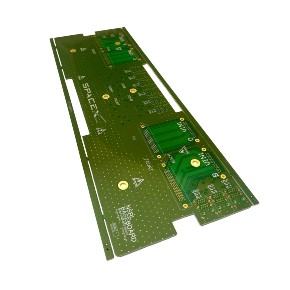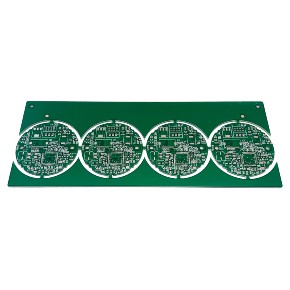What is PCB Prototyping?
Printed Circuit Boards (PCBs) are the backbone of modern electronic devices, from smartphones and computer motherboards to medical equipment and automotive systems. Creating a reliable PCB requires precision, planning, and rigorous testing—a process where PCB prototyping plays a vital role. PCB prototyping is crucial for identifying design flaws, enhancing performance, and ensuring cost efficiency, making it an indispensable part of the development process. By validating designs early, prototyping accelerates time-to-market and builds stakeholder confidence in the final product.
This article explores PCB prototyping, its advantages, and its role in streamlining the design-to-production journey for electronic devices.
What is PCB Prototyping?
PCB prototyping is the process of creating an early model or sample of a printed circuit board to test and validate its design before mass production. A prototype serves as a proof of concept, helping engineers assess functionality, performance, and compatibility with the overall system.
Prototyping involves designing a PCB layout using software tools, fabricating the physical board, and assembling components for testing. Depending on the complexity of the design, multiple iterations of prototypes may be created to refine the final product. To read up on the history of the printed circuit board, check out The Evolution of Printed Circuit Board (PCB) Technology: From Early Days to Modern Innovations.
PCB prototyping is typically categorized into:
- Proof-of-Concept Prototypes: These prototypes validate the basic functionality of the design.
- Functional Prototypes: They include most, if not all, components to test the functionality and performance of the PCB.
- Production-Ready Prototypes: These are final prototypes that replicate the design intended for mass production.
The PCB Prototyping Process
The PCB prototyping process can be broken down into several key steps:
1. Design and Layout
Engineers use software tools like Altium Designer, Eagle, or KiCAD to create a schematic and PCB layout. This stage includes defining the board size, routing the connections, and positioning the components.
2. Fabrication
Once the design is finalized, the board is fabricated using materials like FR4, polyimide, or metal-core substrates. The fabrication process involves etching, layering, and drilling to create the desired circuit pathways.
3. Assembly
Components are mounted onto the board using techniques such as Surface Mount Technology (SMT) or Through-Hole Technology (THT).
4. Testing and Validation
The prototype undergoes rigorous testing to ensure it meets performance and reliability standards. Common tests include:
- Functionality testing
- Signal integrity analysis
- Thermal analysis
- Electromagnetic compatibility (EMC) testing
5. Iteration and Refinement
Feedback from testing informs design improvements, and the process may be repeated until the prototype meets all requirements.
Benefits of PCB Prototyping
Using prototypes in PCB development offers numerous advantages, including:
1. Identifying and Eliminating Design Flaws
Early prototypes help uncover design errors, such as incorrect component placement, faulty connections, or inadequate power distribution. Addressing these issues before production saves time and costs.
2. Improved Product Performance
Prototyping allows engineers to optimize the design for performance, ensuring the PCB functions as intended under real-world conditions.
3. Cost Efficiency
Detecting and resolving issues during prototyping is far less expensive than discovering them during or after mass production. Prototypes reduce the risk of costly recalls and redesigns.
4. Faster Time-to-Market
By testing and validating designs early, companies can streamline the development cycle, reducing the time required to bring a product to market.
5. Customization and Innovation
Prototyping provides the flexibility to experiment with different designs and technologies, fostering innovation and customization.
6. Enhanced Reliability
Testing prototypes under various conditions ensures the final product is robust and reliable, minimizing failures in the field.
7. Stakeholder Confidence
Demonstrating a working prototype boosts confidence among stakeholders, including investors, clients, and internal teams.
PCB Prototyping Techniques
There are several methods for prototyping PCBs, each suited to different needs:
1. Manual Prototyping
Engineers manually create simple circuits using breadboards or perfboards for initial testing. While this method is quick, it’s limited to basic designs.
2. 3D Printing
3D printing allows rapid prototyping of PCB enclosures or substrates, enabling quick iterations and adjustments.
3. CNC Milling
CNC machines are used to mill PCBs directly from a design file. This method is fast and precise but may not support multilayer boards.
4. Professional Fabrication Services
Specialized PCB prototyping services offer advanced capabilities like multilayer designs, HDI technology, and microvia structures. Check out another article on this blog to help select PCB suppliers: How to Choose the Best PCB Supplier for Your Next Project
Challenges in PCB Prototyping
While PCB prototyping offers many benefits, it’s not without challenges:
- Cost of Advanced Prototyping Tools
- High-end prototyping tools and services can be expensive, particularly for small-scale developers.
- Time-Consuming Iterations
- Complex designs may require multiple iterations, extending development timelines.
- Material and Design Constraints
- Certain materials or components may not be readily available for prototypes, limiting design choices.
- Testing Limitations
- Simulating all real-world conditions in a prototype can be challenging, leading to unforeseen issues in production.
Choosing the Right Prototyping Partner
For companies without in-house prototyping capabilities, partnering with a reliable PCB prototyping service is essential. Key considerations include:
- Expertise: Ensure the service provider has experience with your type of design.
- Capabilities: Verify they offer advanced features like multilayer boards, high-density interconnects (HDI), and flexible PCBs.
- Turnaround Time: Fast prototyping services help accelerate product development.
- Quality Assurance: Look for providers with stringent quality control measures.
Additional Considerations in PCB Prototyping
Environmental Impact of Prototyping
In recent years, sustainability has become a growing concern in the electronics industry. The prototyping phase is no exception. Waste materials generated during the prototyping process, including etched copper and defective boards, can have significant environmental consequences. By opting for environmentally conscious prototyping practices—such as recycling materials and using eco-friendly substrates—companies can reduce their ecological footprint while maintaining high-quality standards.
Importance of Documentation
Proper documentation during the prototyping phase is critical for ensuring a smooth transition to production. Detailed records of component selections, testing results, and design iterations not only aid in troubleshooting but also provide valuable insights for future projects. Comprehensive documentation can save significant time and resources in the long run, especially when scaling production or revisiting a design for upgrades.
Integration with Emerging Technologies
The rise of emerging technologies like the Internet of Things (IoT), wearable devices, and 5G communication demands PCBs that are smaller, more efficient, and highly reliable. PCB prototyping allows engineers to explore innovative designs that incorporate advanced features such as flexible circuits, higher signal speeds, and increased power efficiency. By leveraging state-of-the-art prototyping techniques, developers can stay ahead of industry trends and meet evolving consumer demands.
Conclusion
PCB prototyping is an indispensable step in electronic product development, offering a low-risk and cost-effective way to validate designs before mass production. By identifying flaws, optimizing performance, and enhancing reliability, prototyping ensures a smoother path from concept to market-ready product.
Whether you’re developing cutting-edge technology or refining an existing design, investing in PCB prototyping delivers long-term benefits—saving time, reducing costs, and ensuring product success. Partnering with a trusted prototyping service like Onboard Circuits can further streamline this process, providing the expertise and tools needed to bring your vision to life.
For more information on PCB prototyping and to explore our services, visit OnboardCircuits.com.






